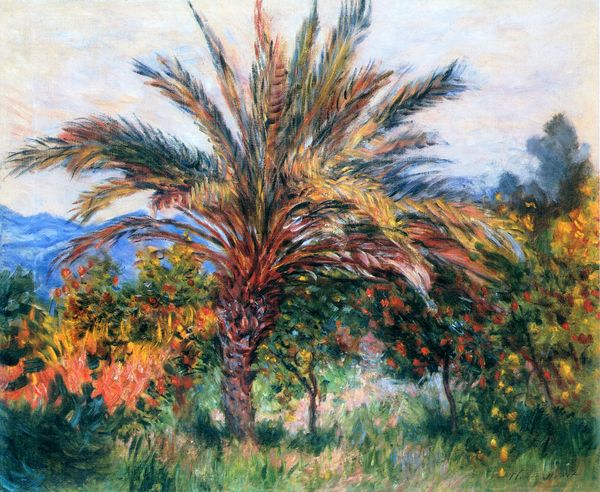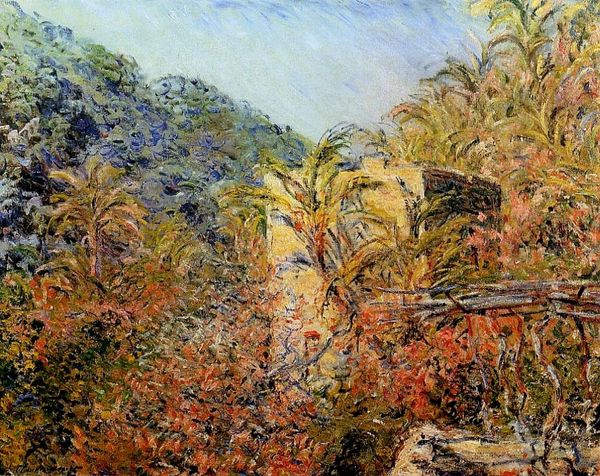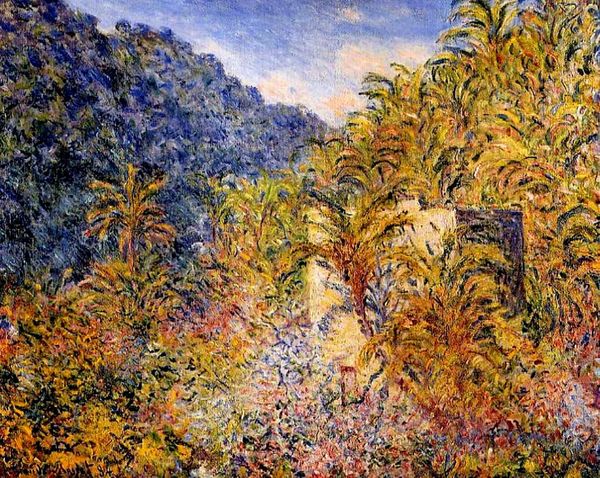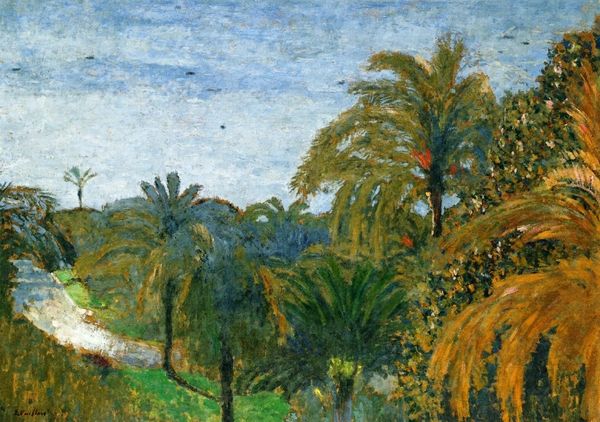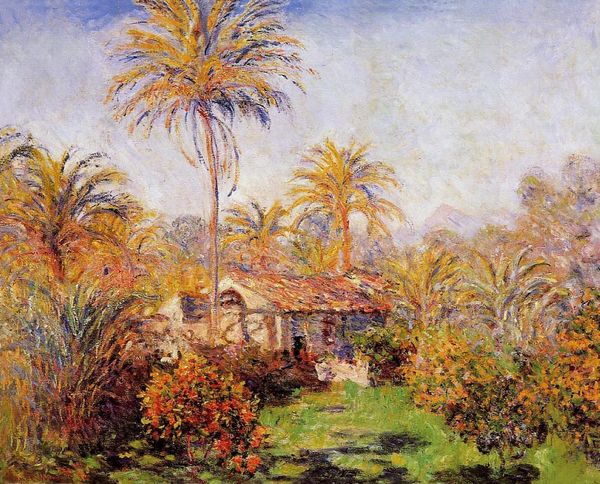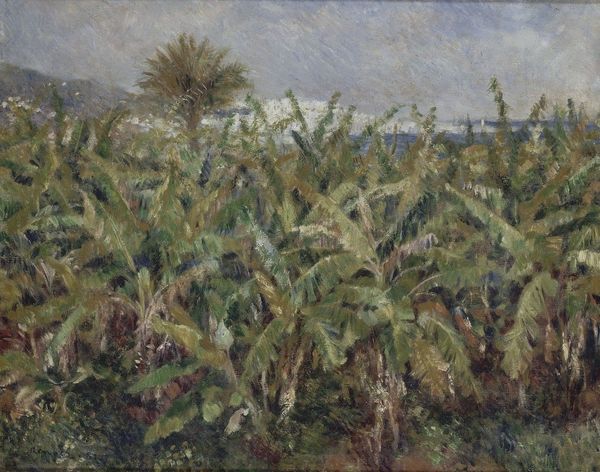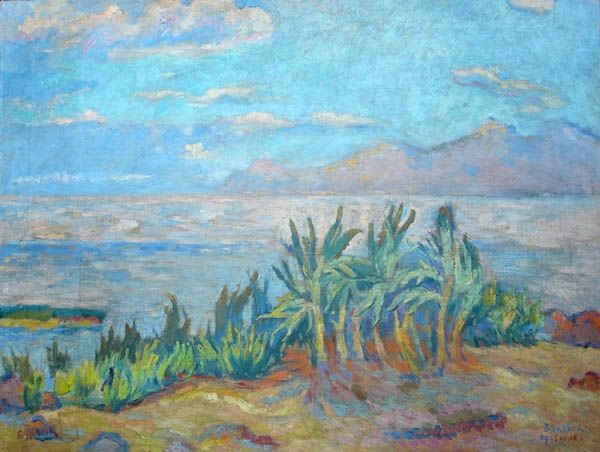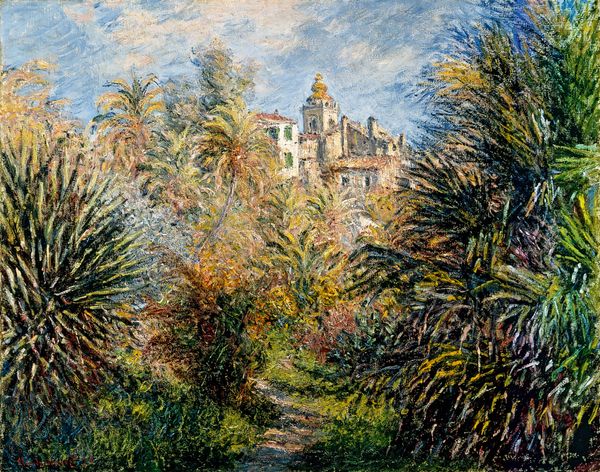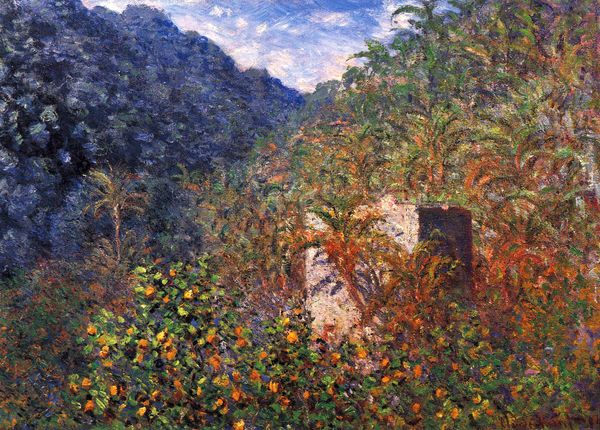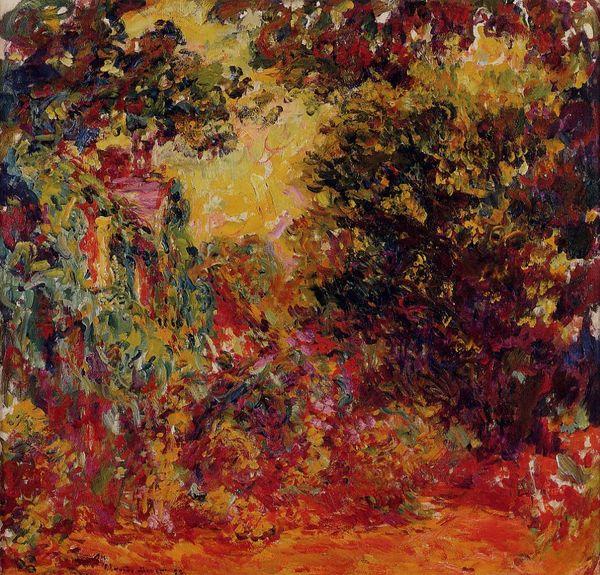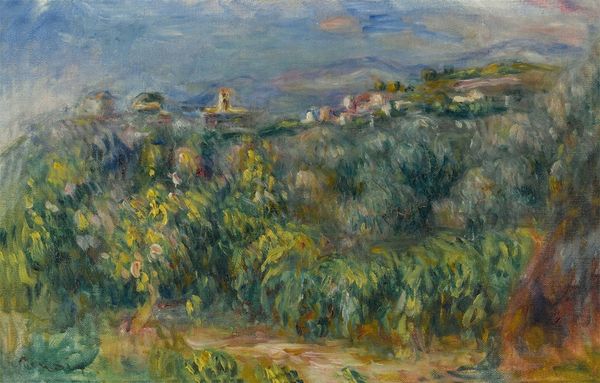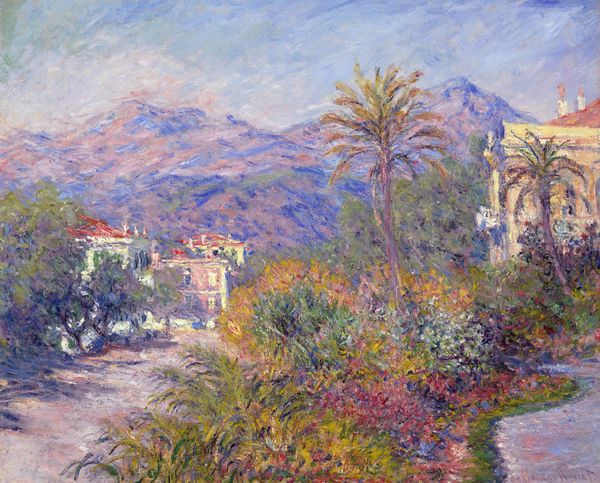
painting, plein-air, oil-paint
tree
painting
impressionism
grass
impressionist painting style
plein-air
oil-paint
landscape
impressionist landscape
plant
natural-landscape
cityscape
nature
Copyright: Public domain
Curator: Claude Monet painted this scene in 1884, titled "Garden in Bordighera, Impression of Morning". It resides here in the Hermitage Museum. Editor: It's quite a lively garden, isn't it? Almost overwhelming, this abundance of green and the textured application of the oil paint. Curator: Monet was capturing more than just botanical accuracy. Bordighera, a town on the Italian Riviera, was fashionable with the wealthy for wintering. Its appeal extended to artists in search of fresh motifs. The landscape presented an exotic "otherness". Editor: Exotic, indeed. But how manufactured was that "otherness" for consumption back home, though? Looking at the impasto—the thick daubs of color. You can feel the very physical effort that Monet expended. Did he grapple with portraying that sense of privilege within his artistic practice? Curator: Perhaps the Bordighera landscapes afforded Monet some aesthetic liberty and success outside the dominant Parisian market. It also taps into the rise of tourism. The appeal to an audience was for a leisure class who desired access, or even just the fantasy of access, to such a place. Editor: Note the steeple—barely peeking out amid the greenery. It’s grounded, where all the fronds almost ripple, almost dissolve. Curator: Monet was clearly pushing the boundaries of perception. Think about the plein-air approach of painting outside. Capturing a fleeting moment of light and atmosphere in paint demanded speed. He seems interested less in architectural structure and more in nature reclaiming it. Editor: You’re right. In many ways it does exemplify impressionist plein-air, that desire to represent a feeling that moves through your hands quickly, where light touches and leaves an almost violent wake behind. The visible brushstrokes are as important as what they depict. It asks you to contemplate not just a place, but also an activity of making. Curator: Thinking about the cultural impact—a picture like this shapes not just artistic practice but tourism, perceptions, even perhaps an environmental consciousness. It invites the viewer to cherish natural landscape or be more attentive of a specific location. Editor: Absolutely, that material experience embedded into the painting translates as an embodied consciousness. Thank you for shedding light on that!
Comments
No comments
Be the first to comment and join the conversation on the ultimate creative platform.

